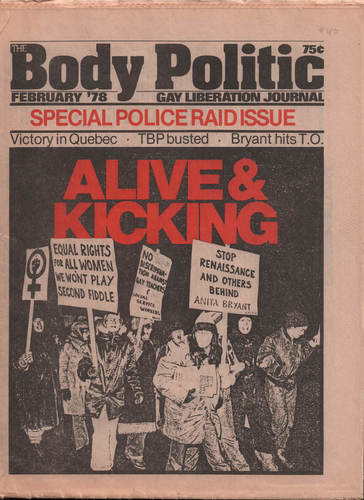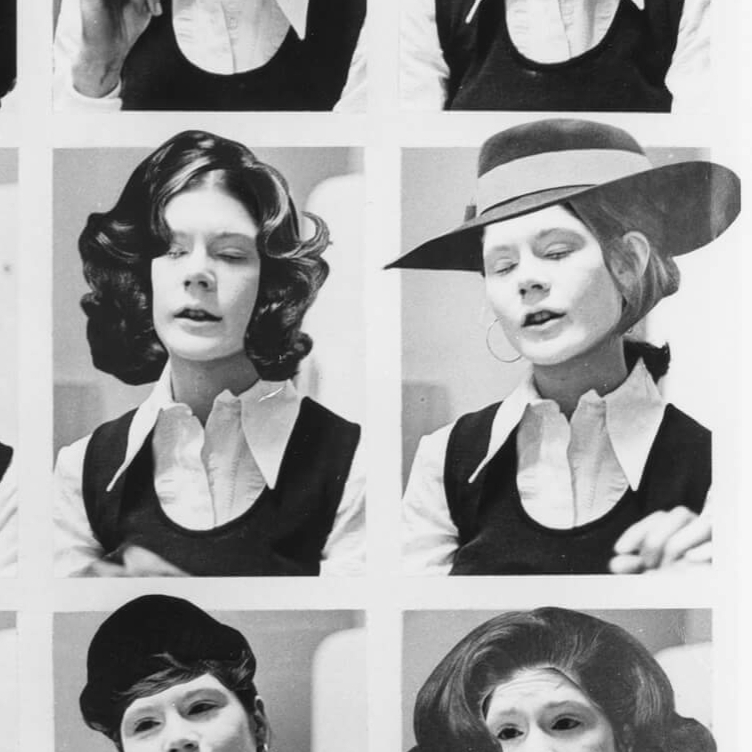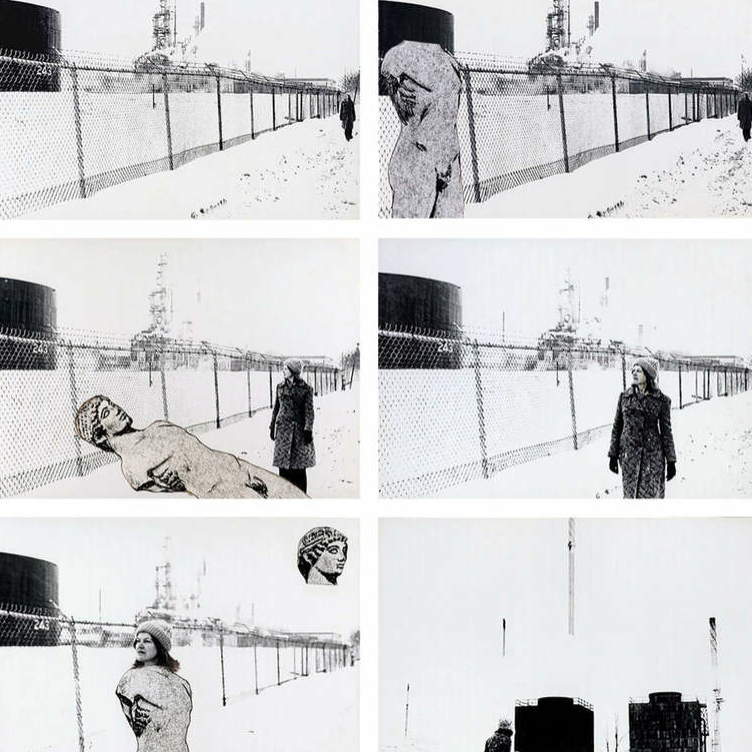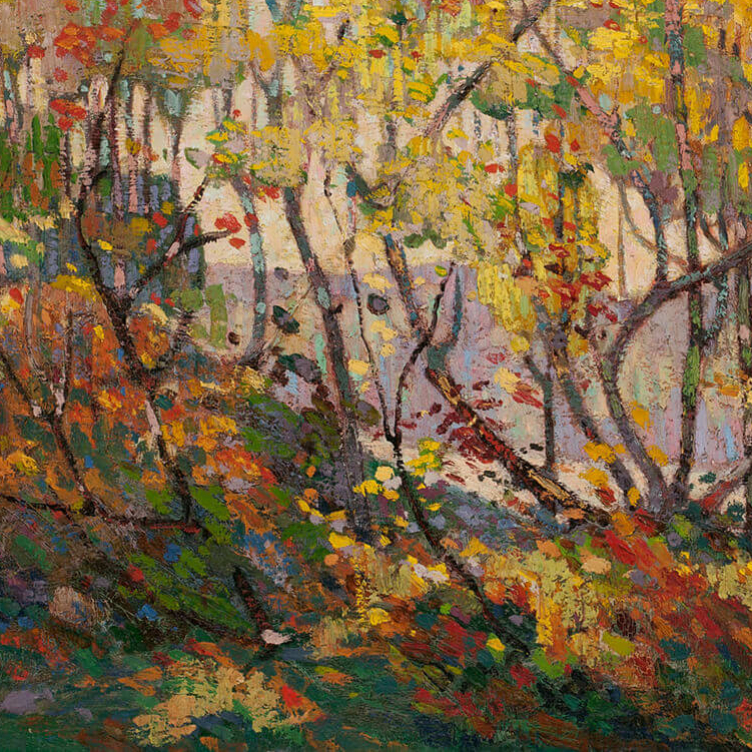As a group of three men who identified as gay, the artist group General Idea (active 1969–1994) played with notions of gender and sexuality. Their performances and imagery pushed the boundaries of sexual identity representation at a time when key changes were taking place in North America with regard to LGBT (lesbian, gay, bisexual, and transgender) rights. In 1968, just before group members AA Bronson, Felix Partz, and Jorge Zontal met in Toronto, Justice Minister Pierre Trudeau introduced an omnibus bill that reformed Canadian law with regards to homosexuality, as well as abortion and contraception. Implemented in 1969, the year that General Idea was founded, amongst other things, it decriminalized homosexuality. That same year, New York City was rocked by the Stonewall riots, a series of violent protests against the police raid of a gay bar in Greenwich Village.

Cover of the first issue of The Body Politic
November–December, 1971
In 1971 in Toronto, the The Body Politic, “Canada’s gay newspaper of record,” was founded. In the same period, other spontaneous actions of civil resistance and community organization occurred. For instance, a series of small-scale picnics on Hanlan’s Point, Toronto Islands, began in concert with civil rights marches.
Despite these moments of declaration, equality remained elusive, and there existed widespread violence against and surveillance and repression of LGBT communities. In January 1979, General Idea participated in a public demonstration against an obscenity charge that had been laid against The Body Politic the previous year, contributing a performance titled Anatomy of Censorship. On February 5, 1981, the Toronto police coordinated Operation Soap, a large-scale raid on four Toronto bathhouses that led to the arrest of more than three hundred men—including Zontal. This raid led to public outcry and large protests, which galvanized support across the country and reframed the struggle for equality as one of human rights.

Cover of The Body Politic: Special Police Raid Issue
February, 1978
General Idea’s work should be understood in the context of this paradigm shift. Though their art is now seen as unabashedly speaking to queer identity, this theme was not addressed by critics until the mid-1980s. In the art world at the time, sexuality was not a topic that could be raised. The artists did not experience censorship; rather, this facet of their projects was simply ignored. Bronson explained, “Sexuality was kind of a dangerous subject in the art world. Sex was never touched upon. And, to call yourself a gay artist would be, of course, the death knell of your career.”
Despite this, General Idea made many brazen and playful references to queer identity in their works, such as Baby Makes 3, 1984/89. In this portrait, Bronson, Zontal, and Partz are depicted in bed together, with the covers pulled up to their chins. Rosy cheeks and softly rounded faces suggest innocence and infantalization. The trio alludes to a traditional nuclear family while also suggesting a queering of this format. This reference to family also reflects the nature of General Idea’s collaboration, as the group’s domestic lives and art production were very much entwined.

General Idea, Baby Makes 3, 1984/89
Chromogenic print (Ektachrome), 76.9 x 63.1 cm, edition of three plus one artist’s proof, signed and numbered, various collections
Bronson recalls the group’s desire to have critics discuss their work in terms of sexuality and has said the group baited art critics by “being more and more outrageous all of the time.” For instance, Mondo Cane Kama Sutra, 1984, clearly depicts trios of fornicating neon poodles. The poodle was a key symbol in General Idea’s oeuvre, primarily intended as a clichéd image that signifies gayness in mainstream North American culture: Bronson has said, “The poodle stands for the queer artist.” Despite the overt sexual imagery in the paintings, critics discussed these works in relation to the trio’s artistic collaboration. Finally, by 1986, General Idea was written about in terms of queer identity. The shift, Bronson noted, was one of attitude: “Prior to that it was just considered embarrassing or something.”

General Idea, Mondo Cane Kama Sutra (detail), 1984
Fluorescent acrylic on canvas, 243.8 x 304.8 x 10 cm, Collection General Idea
This painting is one from a set of ten that comprise the work.
Following the end of General Idea’s collaboration in 1994, with the deaths of Partz and Zontal from AIDS-related causes, contemporary scholars such as Virginia Solomon have sought to address the queer dimension of the group’s work.
This Essay is excerpted from General Idea: Life & Work by Sarah E.K. Smith.
 Karen Tam’s Autumn Tigers
Bridging Past and Present: Invisible Made Visible
By Imogene L. Lim, PhD
Karen Tam’s Autumn Tigers
Bridging Past and Present: Invisible Made Visible
By Imogene L. Lim, PhD
 The Frontier Portraits of C.D. Hoy
A Chinese Canadian Photographer’s Tribute to His Community
By Faith Moosang
The Frontier Portraits of C.D. Hoy
A Chinese Canadian Photographer’s Tribute to His Community
By Faith Moosang
 Interrogating Identity
Suzy Lake explores the role of photography in shaping how we understand and see ourselves
By Erin Silver
Interrogating Identity
Suzy Lake explores the role of photography in shaping how we understand and see ourselves
By Erin Silver
 An Emboldened Artist
How Oviloo Tunnillie achieved rare international acclaim as an Inuit female sculptor
By Darlene Coward Wight
An Emboldened Artist
How Oviloo Tunnillie achieved rare international acclaim as an Inuit female sculptor
By Darlene Coward Wight
 Painting the Cultural Mosaic
William Kurelek traversed the country in a quest to capture its diverse inhabitants
By Andrew Kear
Painting the Cultural Mosaic
William Kurelek traversed the country in a quest to capture its diverse inhabitants
By Andrew Kear
 Domestic Discontent
Mary Pratt’s poetic scenes of home life are praised for their political edge
By Ray Cronin
Domestic Discontent
Mary Pratt’s poetic scenes of home life are praised for their political edge
By Ray Cronin
 A New Vision of the North
Annie Pootoogook’s art offers unprecedented insights into the contemporary Arctic
By Nancy G. Campbell
A New Vision of the North
Annie Pootoogook’s art offers unprecedented insights into the contemporary Arctic
By Nancy G. Campbell
 Meetings of Minds
Sorel Etrog found new ideas in collaborative work
By Alma Mikulinsky
Meetings of Minds
Sorel Etrog found new ideas in collaborative work
By Alma Mikulinsky
 Introducing Miss Chief
An excerpt from the ACI’s book “Revision and Resistance”
By Shirley Madill
Introducing Miss Chief
An excerpt from the ACI’s book “Revision and Resistance”
By Shirley Madill
 A Practice of Recovery
An excerpt from the ACI’s book “Revision and Resistance”
By Sasha Suda
A Practice of Recovery
An excerpt from the ACI’s book “Revision and Resistance”
By Sasha Suda
 Decolonizing History Painting
An excerpt from the ACI’s book “Revision and Resistance”
By Ruth B. Phillips and Mark Salber Phillips
Decolonizing History Painting
An excerpt from the ACI’s book “Revision and Resistance”
By Ruth B. Phillips and Mark Salber Phillips
 A Vision for the Future
An excerpt from the ACI’s book “Revision and Resistance”
By Nick Estes
A Vision for the Future
An excerpt from the ACI’s book “Revision and Resistance”
By Nick Estes
 Inside Kent Monkman’s Studio
An excerpt from the ACI’s book “Revision and Resistance”
By Jami C. Powell
Inside Kent Monkman’s Studio
An excerpt from the ACI’s book “Revision and Resistance”
By Jami C. Powell
 The Rule of Chance
Jean Paul Riopelle’s break with Automatism
By François-Marc Gagnon
The Rule of Chance
Jean Paul Riopelle’s break with Automatism
By François-Marc Gagnon
 From Taos to New York
Agnes Martin and the currents of American Art
By Christopher Régimbal
From Taos to New York
Agnes Martin and the currents of American Art
By Christopher Régimbal
 An Artist Blooms
Mary Hiester Reid’s floral aesthetics
By Andrea Terry
An Artist Blooms
Mary Hiester Reid’s floral aesthetics
By Andrea Terry
 The Patriotic Painter
Greg Curnoe’s Canada
By Judith Rodger
The Patriotic Painter
Greg Curnoe’s Canada
By Judith Rodger
 Walking, Stacking, Dancing
Françoise Sullivan’s conceptual 1970s
By Annie Gérin
Walking, Stacking, Dancing
Françoise Sullivan’s conceptual 1970s
By Annie Gérin
 The Extraordinary North
Tom Thomson’s diary of landscape
By David P. Silcox
The Extraordinary North
Tom Thomson’s diary of landscape
By David P. Silcox
 A Champion of Abstraction
Jock Macdonald sought a new expression in art
By Joyce Zemans
A Champion of Abstraction
Jock Macdonald sought a new expression in art
By Joyce Zemans